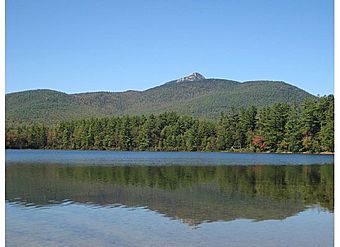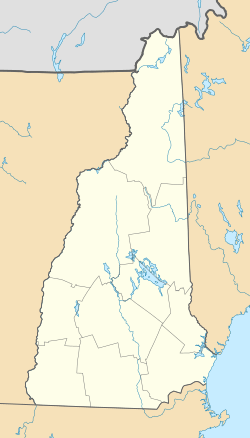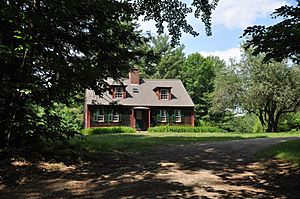Chocorua Lake Basin Historic District facts for kids
Quick facts for kids |
|
|
Chocorua Lake Basin Historic District
|
|

|
|
| Location | Parts of NH 16, Chocorua Lake Rd., Philbrick Neighborhood, Fowles, Washington Hill Rds & Loring, MacGregor & Bolles Rd, Tamworth, New Hampshire |
|---|---|
| Area | 6,130 acres (24.8 km2) |
| Built | 1867 |
| Architect | multiple |
| Architectural style | Shingle Style, Classical Revival, et al |
| NRHP reference No. | 05000569 |
| Added to NRHP | June 9, 2005 |
The Chocorua Lake Basin Historic District is a big historic area around Chocorua Lake in Tamworth, New Hampshire. It covers over 6,000 acres (about 24 square kilometers). The lake is roughly in the middle of this district. The area stretches from Washington Hill Road in the east to Fowles Mill Road in the west. It also goes from the town border with Albany in the north to Heavenly Hill Road in the south.
This district is important because of the many summer homes built here in the late 1800s and early 1900s. Also, the people who owned land here worked hard to protect the lake. They also helped save the beautiful views of the lake and nearby Mount Chocorua. This historic district was added to the National Register of Historic Places in 2005.
Contents
Discovering Chocorua Lake's History
The land around Chocorua Lake in Tamworth was mostly used for farming in the early 1800s. Some small mills also used the streams in the area. People started to notice the region as a tourist spot around 1867.
Early Tourism and Conservation Efforts
The Chocorua House, a local inn on New Hampshire Route 16, was an early attraction. Tourists loved the amazing views of the lake and Mount Chocorua. Sadly, this inn later burned down.
People began building private summer homes in 1874. From the very start, there was a strong focus on protecting the environment. This was mainly to keep the lake safe and beautiful.
Charles Pickering Bowditch, a financier from Boston, bought an old farm in 1879. He was very important in buying most of the land around the lake for conservation. This meant protecting it from too much building.
Growth of a Summer Community
New homes were built at a steady pace. First, old farm properties were bought and fixed up. Then, architects designed new summer houses. The community that grew here was very close-knit. Friends and family often told others about the area. This way of growing continued well into the 1900s.
Protecting the Landscape Today
Much of the land around Chocorua Lake is now protected. Some areas are set aside for conservation. Other properties have special rules called protective covenants. These rules control how the land can be used in the future.
Most of the homes are set far back on their own private lots. They mostly offer views of Mount Chocorua today. In the 1800s, you could see the lake from many places. This was because the land was more open. But now, trees have grown back, so lake views are harder to find.
There are about seventy homes in the historic district. Fifty of these homes still have their original historic look. Fifteen homes were built on old farms from the early 1800s. Some of these have been well-kept to keep their historic style.
Newer buildings are mostly in styles popular in the early 1900s. These include the Shingle style, Craftsman, and Colonial Revival styles. Famous architects like Peabody and Stearns, Charles Adams Platt, and Charles Howard Walker designed buildings here. Charles Howard Walker even spent his summers in the area.




